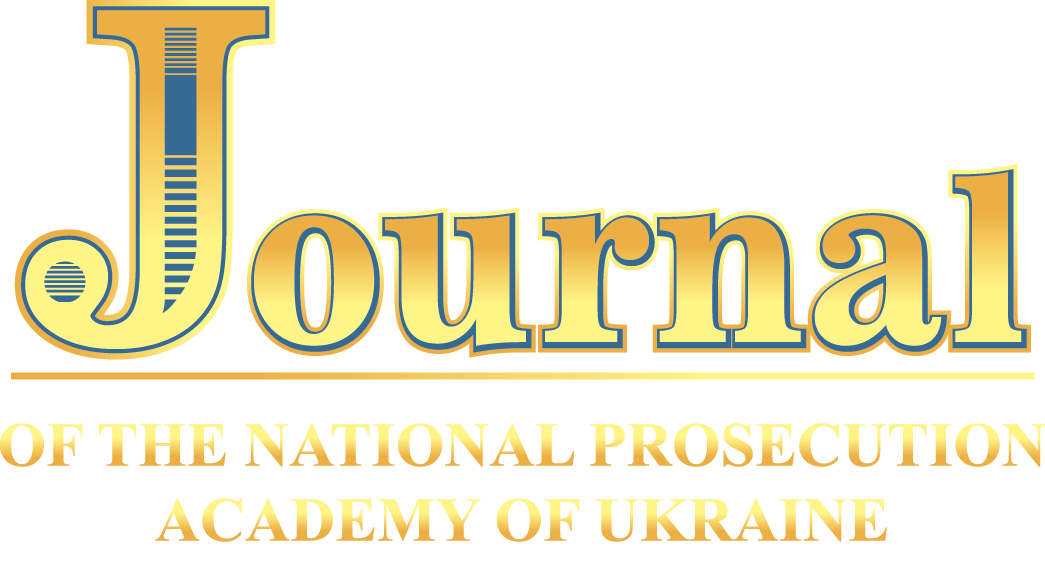| (2018) 3 Visn. Nac. akad. prokur. Ukr. 86–98 | |
| doi | |
| Title of the article | Regional Features of Corruption in Ukraine |
| Author(s) | SERHII MINCHENKO Doctor of Law, Senior Research Officer, Habilitated Doctor of Law (Republic of Poland), Vice-Rector, National Prosecution Academy of Ukraine, Kyiv, Ukraine, s.minchenko74@gmail.com |
| Short title of the journal (ISSN) |
Visn. Nac. akad. prokur. Ukr. |
| Year | 2018 |
| Issue | 3 |
| Pages | [86–98] |
| Language | Ukrainian |
| Abstract | Increasingly, scholars and practitioners draw attention to the need to apply a regional approach to crime research, which, in the author’s opinion, is natural, since it occurs precisely under the influence of phenomena and processes that have their own peculiarities in each region. Analysis of such features will help to develop more effective measures to prevent this negative phenomenon. The purpose of the article is to identify the factors that affect the different levels of corruption in the regions of Ukraine and the main measures to prevent it. Studying corruption at the regional level together with factors that determine the criminogenic activity of the population of the region is considered as the most effective and universal way. The advantages of this scientific position are given. It is determined that the regional approach consists in the criminological analysis of individual spatial systems, the detection of destabilizing factors in them, sources of disorganization, etc. In view of this, attention was paid to the regional features of corruption crime. Their comprehensive research should be the basis for updating the effectiveness of countering corruption. Given the reforms in the economy, politics, and law enforcement activities, there has been some positive progress in counteracting corruption by the state. At the same time, problems with the state of implementation of measures, programs, plans of counteraction and prevention of corruption remain unresolved. Their implementation can not be considered satisfactory, including at the local level. The foreign experience of counteracting corruption has been studied. Thus, in the Republic of Poland, one of the factors that directly affects the situation with regard to corruption in the country is the level of income of the population. Data are also provided by reputable international anti-corruption organizations, which suggest that, despite a slight improvement in its position in the perception of corruption in 2017, Ukraine still has a rather low 130th place. The necessity of completing the formation of a structured system of anti-corruption bodies was stressed. The attention is focused on the regularities and interrelationships of the level of corruption crime (in particular, in the bodies of the National Police of Ukraine) in different regions, the negative processes that occur in them. Thus, the analysis of statistical data and reports in mass media gives grounds to assert that the level of crime is highest in those regions that are leaders in the number of detained police bribes. Similarly, other specific factors affect the level of corruption in other regions of Ukraine. To them the author considers the level of population security, economic development of the region, the influence of external factors and the formation of certain traditions on their background. It has been established that for the effective organization of prevention of corruption, analysis of both general data for Ukraine and criminological features of regions, various social groups and their spheres of vital activity is essential. To do this, it is necessary to fulfill the main tasks of the regional criminological research on corruption, a list of which is given in the article. It is emphasized that there is no single universal indicator that would characterize corruption in all its manifestations. Therefore, when applying the regional approach in the study of corruption, it is expedient to use the classification of regions according to different characteristics, in particular: natural conditions, demographic indicators, main functions in the national economy, leading spheres and types of people’s livelihoods. The classification of regions is also proposed, taking into account the aggregate of indicators that produce corruption, with the help of which separate socio-economic macro regions of Ukraine are allocated. The author focuses on the fact that criminal processes, like any other processes and social relations, are specifically manifested in a particular region in view of its economic, demographic, ethnic, criminological and other features. Therefore, the study of corruption at the regional level is based on factors that can determine the criminogenic activity and differentiate the fight against this phenomenon in specific conditions. A list of specific measures to prevent corruption in the regions is also proposed. |
| Keywords | corruption; level of crime; regional approach; counteraction; prevention. |
| References | REFERENCES Bibliography Authored books 1. Hołyst Brunon, Krіminologia (Wydawnictwo Wolters Kluwer SA 2016) 1292 (in Poland). Edited books 2. Kojder A, ‘Korupcja i poczucie moralne Polakow’ Kondycia moralna spoleczenstwa polskiego (Janusz Mariański red, Wydawnictwo WAM 2002) 233 (in Poland). Encyclopedias 3. Dolgova A (ed), Rossijskaia kriminologicheskaia entsiklopedia [Russian Criminological Encyclopedia] (Norma – Infra-M 2000) 577 (in Russian). Journal articles 4. Raska Je, ‘Prestupnost’ kak pokazatel’ sostojanija social’nogo prostranstva’ [‘Crime as an Indicator of the State of Social Area’] (1987) 761 Teoreticheskie problemy izuchenija territorial’nyh razlichij v prestupnosti. Uchenye zapiski TarGU 18–30 (in Russian). Websites 5. ‘Transparency International’ (Wikipedia) URL: accessed 20 September 2018 (in Ukrainian). 6. ‘Khabari u policii. Khto, za shcho i skilky brav’ [‘Police Bribes. Who, What and How Much They Took’] (Antydot) URL: accessed 25 July 2018 (in Ukrainian). |
ISSN: 2311-6676 (print), ISSN: 2663-4635 (online) / advance payment index: 95295 / issued 4 times a year / languages: Ukrainian, English



